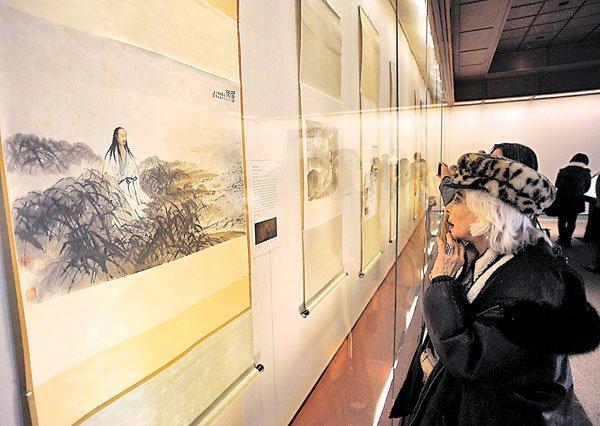About ten days ago, 15 museum directors from the U.S. went to China to meet their peers from Chinese museums, in a meeting organized by the Asia Society to lauch an effort it calls the Asia Society Arts and Museum Network.
 The Asia Society issued a press release in advance (which I didn’t get), but it was China Daily, a government-funded English language newspaper (whose charms I once wrote about), that wrote an after-the-fact article I noticed. It reported that China wants more exchange in contemporary art. That’s a bit of surprise, considering that contemporary art is often politcally tinged (at least) and offers the potential for creating more tension between China and the West.
The Asia Society issued a press release in advance (which I didn’t get), but it was China Daily, a government-funded English language newspaper (whose charms I once wrote about), that wrote an after-the-fact article I noticed. It reported that China wants more exchange in contemporary art. That’s a bit of surprise, considering that contemporary art is often politcally tinged (at least) and offers the potential for creating more tension between China and the West.
But let’s return to the beginning: the Asia Society launched this five-year effort to “strengthen arts communities across Asia and encourage collaboration and exchange between art institutions and professionals in Asia and the United States” in an attempt to “advance cultural understanding between the United States and China.” The directors — heads of the Asia Society Museum, the Whitney, SFMoMA, the Peabody Essex, among them (all are listed in the aforementioned press release) — met with the heads of the Shanghai, Hubei, and Wuhan museums, among others (also listed in the release) in Beijing on Nov. 15-17. Said Melissa Chiu, head of the Asia Society galleries:
There has been an enormous increase in the number of museums in China and there is a great desire on their part to build partnerships with American museums and understand more about how museums can become larger cultural centers in their communities. The launch of the Arts and Museum Network at the U.S.-China Forum on the Arts and Culture is the beginning of a series of conversations between museum directors in the United States and in Asia.
Now to China Daily. It begins with a bit about Jay Xu, the director of the Asian Art Museum of San Francisco, who grew up in China but has lived in the U.S. for 22 years. “China is leading the way in the speed of building museums. Nobody is building as many museums as China is now,” he told the paper, adding “Managing these museums and personnel training is extremely important, and that’s one of the areas where U.S. museums could offer assistance and help.” But he was careful to compliment Chinese museums, saying the U.S. can learn from them, particularly in the use of “cutting-edge technology and innovative ways to connect art to life.”
I was disappointed to hear Xu cite an example from the Shanghai museum, which employs “motion detectors at exhibits of ancient Chinese scroll paintings. When someone looks at one section of the scroll, the detector will sense the movement and turn on the light, and, when one moves away, that light would dim while others turn on.” While impressive indeed, they were in operation when I first visited China in 2002. I’d have liked a more recent example.Â
It was Fan Di’an, director of the National Art Museum of China, who took the bolder, contemporary stance. “Chinese and American contemporary art are very active in commercial events, such as auctions and expositions, but not so much in public museums,” he was quoted as saying. “That’s something we should pay more attention to.”
With the politically active  Ai Weiwei being the best-known contemporary Chinese artist in the United States, that’s quite interesting. I wonder what happens next.
Photo Credit: From the Fu Baoishi exhibit at the Metropolitan, Courtesy AFP via China Daily
